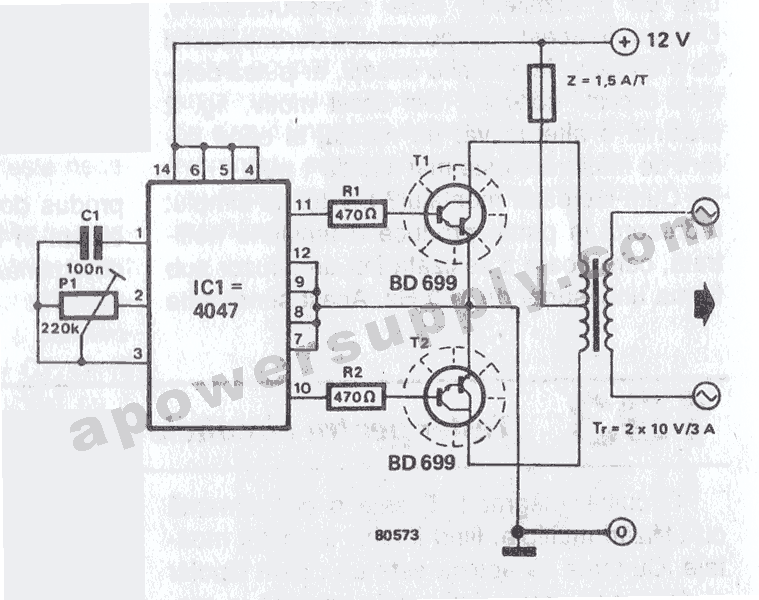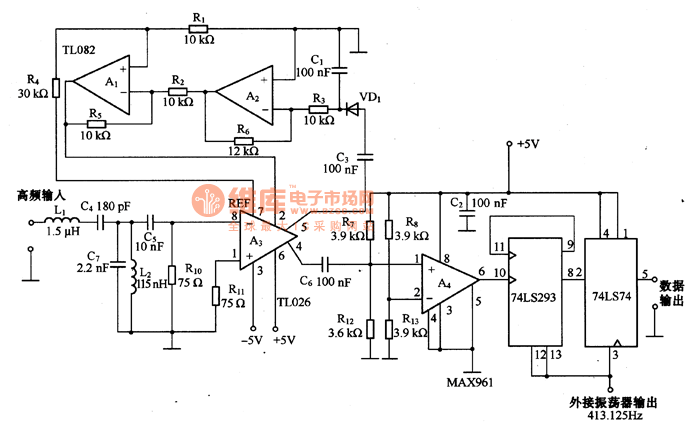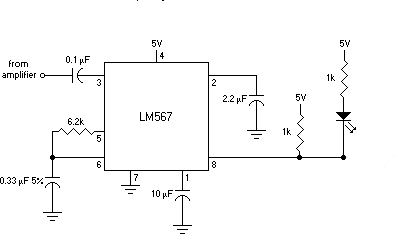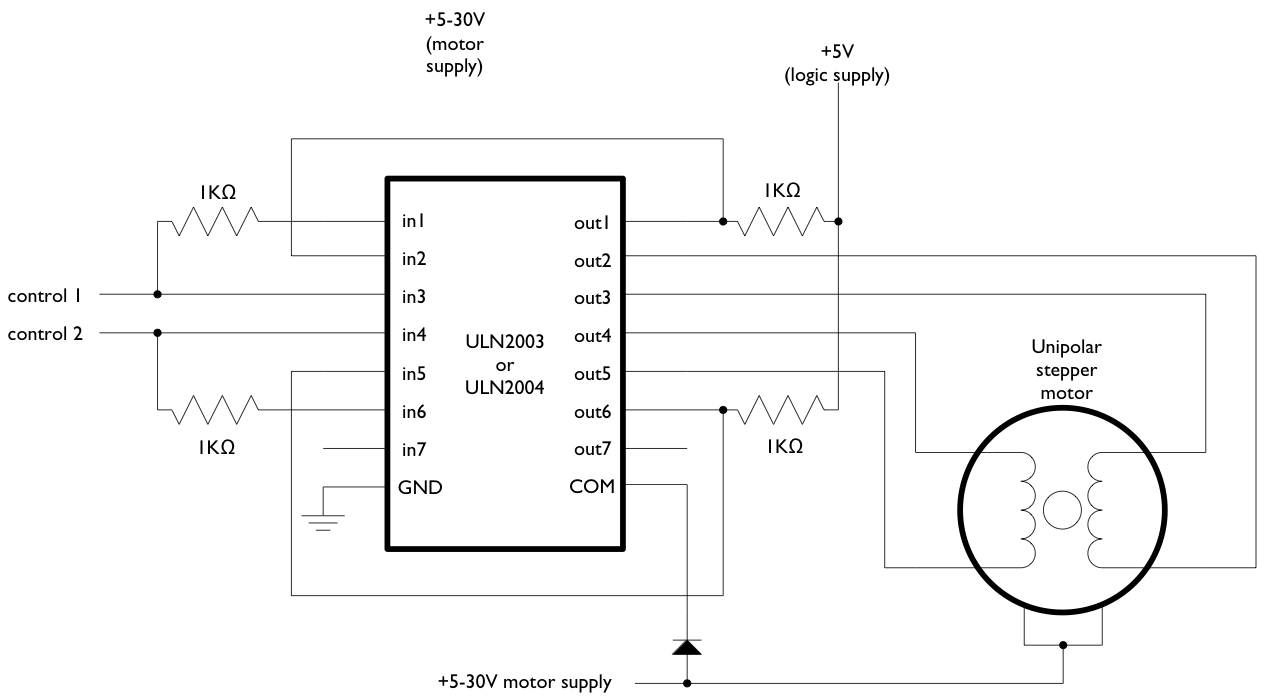
Transistor inverter circuit 6

This is a transistor inverter circuit diagram rated for 100 watts, designed as an easy-to-build circuit. It utilizes only transistors and does not incorporate any integrated circuits. The circuit converts a 12V battery input to a 220V, 50Hz square wave signal. It employs two BC558 transistors, which, when assembled with resistors and capacitors, generate a frequency of 100Hz. Further, two additional BC558 transistors are included to divide the frequency, resulting in a final output of 50Hz. The circuit also includes BD139 and 2N3055 transistors configured as Darlington pairs to drive a 12V center-tapped transformer, stepping up the voltage to 220V at 50Hz for practical use. The inverter's central component is the CMOS 4047, which converts the 12V DC input into a 220V AC output. The 4047 operates as an astable multivibrator, producing a symmetrical rectangular signal at pins 10 and 11. This signal is amplified by two Darlington transistors (T1 and T2) before reaching the secondary coil of a transformer (2 x 10V/60VA). The primary coil produces a 220V AC output. For optimal performance, a toroidal core transformer is recommended to minimize losses. The output frequency can be adjusted using a potentiometer (P1) within a range of 50 to 400Hz. This mini power inverter employs SCRs as primary components, functioning as an oscillator generator to produce a 400Hz output at 300V with a 12V input and a current draw of 0.8A. However, a potential drawback is the risk of the circuit latching in a conducting state under heavy load or short-circuit conditions, necessitating input protection such as a fuse. The transformer used is a 10W mains type with 6V+6V windings on the SCR side and 110V+110V windings in series at the output. The inverter operates with an efficiency of 50%, with an ideal load equivalent to a 22kΩ resistor rated at 5W. The output waveform is approximately sinusoidal at a frequency of 400Hz. Additionally, a simple high-power inverter circuit using four 2N3055 transistors is described, designed for straightforward assembly as an oscillator multivibrator to drive a transformer output of 110V from a 12V battery. This design, while simple, is effective and may appeal to those who prefer uncomplicated circuits. Other related circuits include a simple MOSFET AC power inverter using the CD4001 integrated digital circuit for pulse oscillator generation, producing an output of 110V or 220V from a 12V battery. A variable resistor (VR1) is used to fine-tune the oscillator frequency. Another basic AC inverter circuit utilizes a popular 555 IC to generate frequency, which is amplified with NPN and PNP transistors (TIP41 and TIP42) to drive a transformer, yielding an output voltage of approximately 120V to 230V at 50Hz. A resistor (R4) is employed to control the frequency, and a supply voltage between 5V and 15V is recommended. This circuit is suitable for driving fluorescent lamps and can serve as a general high-voltage source for various applications. It is a cost-effective project designed for 20 to 40-watt fluorescent tubes and can be assembled using commonly available components or kits, requiring no printed circuit board. This is an electronic choke designed for conventional fluorescent lamps.
The described inverter circuits leverage various transistor types and configurations to achieve efficient voltage conversion from low DC levels to high AC outputs. The use of components such as the CMOS 4047 and SCRs enhances the circuit's functionality, allowing for frequency modulation and improved performance. The incorporation of toroidal transformers further optimizes efficiency by reducing magnetic losses, which is critical in high-frequency applications. The circuits are designed to be user-friendly, enabling hobbyists and engineers to construct them with minimal resources. Safety considerations, such as the inclusion of fuses and protective elements, are essential to prevent damage under adverse conditions. Overall, these inverter designs exemplify practical solutions for converting DC power to AC, suitable for various applications including lighting and general power supply needs.This is transistor inverter circuit diagram 100watt it sizes are easy circuit. Because of use the all transistor, have no the integrated circuit. It performs to modify from battery 12V be 220V 50Hz signal square wave. By the circuit works with transistor BC558 x 2pcs and RC assemble the circuit produces 100HZ frequency from that time. There is the transistor BC558 2 again, build the circuit divides by 2 times frequency be left 50Hz frequencies from that time. There is the transistor BD139 and 2N3055 each other be Darlington for drive AC transformer 12V CT 12V : 220V, enhance ac voltage 12V from be 220V 50HZ fully be usable next.
The detail is other see in inverter circuit diagram. This converter has a central component, the CMOS 4047, and converts a 12V DC voltage to 220V AC voltage. 4047 is utilised as a astable multivibrator. At pin 10 and 11 we find a rectangular symmetrically signal which is amplified by tow Darlington transistors T1 and T2 and finally reaches the secondary coil of a transformer network (2 x 10V/60VA).
Primary coil terminals voltage is 220 alternative voltage. To obtain a better performance use a toroidal core transformer with reduced losses. With P1 the output frequency can be regulated between certain limits (50 400Hz). This be Mini Power Inverter, by use SCR be main part electronics, perform Oscillator Generator 400Hz give Output 300V by use Voltage Input 12V Current 0. 8A. The only drawback with this circuit is that it might latch in the conducting state if the load is too heavy or if there is a short at the output, this requires some kind of protection, on the input line, in the form of a fuse or similar.
The transformer used is a 10W mains type with 6V+6V windings on the SCR side and a 110V+110V windings, in series, at the output. Efficiency is 50% and the ideal load is equivalent to a 22k resistor, 5W. The output waveform is vaguely sinusoidal at a frequency of 400Hz. This is Simple High Power inverter by 2N3055 circuit. It use power transistor 2N3055 x 4 pcs. Assemble be Oscillator muti vibrator Drive Transformer output 110V by Input battery 12V, Because of this circuit.
Design be simple then not tall effective, but may advantage with friends at like the circuit is simple, at good effective. For other detail, friends sees in the circuit please yes. I seeks a picture inverter circuit for experience build mini inverter project. Accidentally meet Simple Mosfet AC Power Inverter Circuit. Think should advantage with friends from the circuit uses integrated digital circuit number CD4001 for Pulse Oscillator Generator.
Give power mosfet driver Transformer get Voltage output 110V or 220V from input 12 Volt (Battery 12V). For VR1 give for fine the frequency oscillator output. The other detail see in the circuit by have, Image source: This be basic AC inverter Circuit. Convenient for the initiator who have to is extremely fond of something experience. Because of use IC 555 highly popular, perform produce the frequency, then enlarge with transistor NPN and PNP number TIP41 and TIP42 drive the coil transformer.
Get by can pay Voltage output about 120V to 230V at frequency 50Hz. By have R4 perform control the frequency and should use. Voltage supply about 5V to 15V the detail sees in circuit picture sir. This is the typical circuit from a scanner that drives the flourescent lamp. There is also usually a 2KV capacitor in series with the secondary of the transformer to limit current, etc. They can be used as a general high voltage source for all kinds of things. This is a low-cost project for 20 or 40 watt fluorescent tubes. However the most efficient is to use a 40 watt tube (or two 20 watt tubes in series). It`s a circuit you can put together from junk box components or build from a kit. It`s very simple to build and requires no printed circuit board. This is an electronic choke for a Conventional Fluorescent Lamp. This was an application note of M 🔗 External reference
The described inverter circuits leverage various transistor types and configurations to achieve efficient voltage conversion from low DC levels to high AC outputs. The use of components such as the CMOS 4047 and SCRs enhances the circuit's functionality, allowing for frequency modulation and improved performance. The incorporation of toroidal transformers further optimizes efficiency by reducing magnetic losses, which is critical in high-frequency applications. The circuits are designed to be user-friendly, enabling hobbyists and engineers to construct them with minimal resources. Safety considerations, such as the inclusion of fuses and protective elements, are essential to prevent damage under adverse conditions. Overall, these inverter designs exemplify practical solutions for converting DC power to AC, suitable for various applications including lighting and general power supply needs.This is transistor inverter circuit diagram 100watt it sizes are easy circuit. Because of use the all transistor, have no the integrated circuit. It performs to modify from battery 12V be 220V 50Hz signal square wave. By the circuit works with transistor BC558 x 2pcs and RC assemble the circuit produces 100HZ frequency from that time. There is the transistor BC558 2 again, build the circuit divides by 2 times frequency be left 50Hz frequencies from that time. There is the transistor BD139 and 2N3055 each other be Darlington for drive AC transformer 12V CT 12V : 220V, enhance ac voltage 12V from be 220V 50HZ fully be usable next.
The detail is other see in inverter circuit diagram. This converter has a central component, the CMOS 4047, and converts a 12V DC voltage to 220V AC voltage. 4047 is utilised as a astable multivibrator. At pin 10 and 11 we find a rectangular symmetrically signal which is amplified by tow Darlington transistors T1 and T2 and finally reaches the secondary coil of a transformer network (2 x 10V/60VA).
Primary coil terminals voltage is 220 alternative voltage. To obtain a better performance use a toroidal core transformer with reduced losses. With P1 the output frequency can be regulated between certain limits (50 400Hz). This be Mini Power Inverter, by use SCR be main part electronics, perform Oscillator Generator 400Hz give Output 300V by use Voltage Input 12V Current 0. 8A. The only drawback with this circuit is that it might latch in the conducting state if the load is too heavy or if there is a short at the output, this requires some kind of protection, on the input line, in the form of a fuse or similar.
The transformer used is a 10W mains type with 6V+6V windings on the SCR side and a 110V+110V windings, in series, at the output. Efficiency is 50% and the ideal load is equivalent to a 22k resistor, 5W. The output waveform is vaguely sinusoidal at a frequency of 400Hz. This is Simple High Power inverter by 2N3055 circuit. It use power transistor 2N3055 x 4 pcs. Assemble be Oscillator muti vibrator Drive Transformer output 110V by Input battery 12V, Because of this circuit.
Design be simple then not tall effective, but may advantage with friends at like the circuit is simple, at good effective. For other detail, friends sees in the circuit please yes. I seeks a picture inverter circuit for experience build mini inverter project. Accidentally meet Simple Mosfet AC Power Inverter Circuit. Think should advantage with friends from the circuit uses integrated digital circuit number CD4001 for Pulse Oscillator Generator.
Give power mosfet driver Transformer get Voltage output 110V or 220V from input 12 Volt (Battery 12V). For VR1 give for fine the frequency oscillator output. The other detail see in the circuit by have, Image source: This be basic AC inverter Circuit. Convenient for the initiator who have to is extremely fond of something experience. Because of use IC 555 highly popular, perform produce the frequency, then enlarge with transistor NPN and PNP number TIP41 and TIP42 drive the coil transformer.
Get by can pay Voltage output about 120V to 230V at frequency 50Hz. By have R4 perform control the frequency and should use. Voltage supply about 5V to 15V the detail sees in circuit picture sir. This is the typical circuit from a scanner that drives the flourescent lamp. There is also usually a 2KV capacitor in series with the secondary of the transformer to limit current, etc. They can be used as a general high voltage source for all kinds of things. This is a low-cost project for 20 or 40 watt fluorescent tubes. However the most efficient is to use a 40 watt tube (or two 20 watt tubes in series). It`s a circuit you can put together from junk box components or build from a kit. It`s very simple to build and requires no printed circuit board. This is an electronic choke for a Conventional Fluorescent Lamp. This was an application note of M 🔗 External reference
Warning: include(partials/cookie-banner.php): Failed to open stream: Permission denied in /var/www/html/nextgr/view-circuit.php on line 713
Warning: include(): Failed opening 'partials/cookie-banner.php' for inclusion (include_path='.:/usr/share/php') in /var/www/html/nextgr/view-circuit.php on line 713





